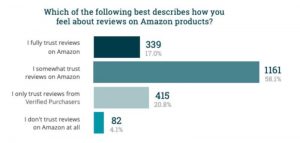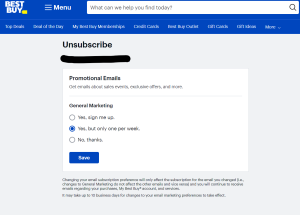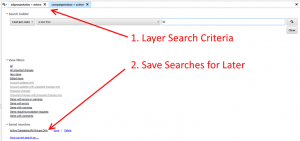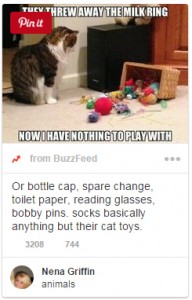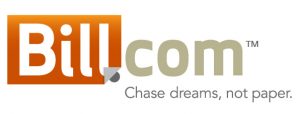
Soft launches, or pre-launches, are simple ways to garnish initial interest from a community, build a list of leads, and position a subscription business for a healthy, powerful launch.
Pre-launches are also usually run for a set period of time – 30, 60 or perhaps even 90 days.
That means you’ve got to stick to a schedule.
But that can be hard. It’s during this time that you also instrument your business beyond gathering leads and initial interest. During the prelaunch, you need to focus on packaging, organizing fulfillment, curating your first set of products, and the development of your full website.
It can feel like a lot to deal with, and might leave you wondering, “What should I do first?”
Below, we’ve outlined a complete week by week calendar for a 60 day prelaunch + 30 day initial launch period (90 day total). It’s split into sections to illustrate how and when things need to happen in order to hit your scheduled launch and shipping date.
Keep in mind – these can be flexible based on your needs!
Before You Start: Get Up to Speed
Before beginning a prelaunch, it’s important to have a few things done:
- Basic product development. You should know what niche your box serves & what items you’re probably putting in the box.
- Research/creation around any social media profiles, websites, or other accounts you’ll need. (You probably don’t want to change names later in the game).
- Set a goal: You should decide how long you want to run your prelaunch, how many leads you want to gather, and how many subscribers you plan to launch with.
By completing these steps before, you be able to spend more time focusing on marketing your idea and executing on key tasks vs. doing more conceptual, big picture work.
By giving yourself a goal, you can determine how long you need to run your launch for, and how aggressively you need to push different operations.
The Calendar
Remember, this is meant to be a general guide – update this calendar based on your speed of execution, goals, and constraints.
Week 0: Pre-launch Prep
- Goal: Develop pre-launch campaign
- Key Tasks:
- Build prelaunch page (platform options listed here)
- Develop marketing copy for prelaunch page
- Includes any unique value proposition you plan to include (giveaways, contests, or other CTAs)
- Set up email marketing tool (such as Mailchimp)
- Create a Welcome automation campaign
- This is a series of emails that automatically send when user joins list
- Test integration between landing page and email list
- Test landing page on mobile
- Finalize page & prepare for public launch
- Build prelaunch page (platform options listed here)
Weeks 1-3: START OF PRELAUNCH
- Goal: Market your page to lean-test quality of idea & product-market fit
- Key tasks:
- Stay focused
- This early phase is primarily focused on promotion of the page to gather enough data points to determine 1) if you have a compelling idea and 2) to determine if the audience you’re targeting finds interest in your product (product-market fit).
- Promote your launch page
- Watch this webinar
- Send 1-2 non-automated email updates
- These should be to your newsletter subscribers, detailing progress and keeping them interested
- These are separate from your welcome automation
- These should be to your newsletter subscribers, detailing progress and keeping them interested
- Update prelaunch page as needed
- Test marketing copy, pictures and CTAs
- Begin product search
- At the end of this process, you should begin to think about the types of products and specific brands for your first box
- Stay focused
Week 4: Review
Going forward, you still need to promote, send update emails, and update your page as needed.
- Goal: Reflect on the data you’ve gathered & determine strength of idea
- At this point, you should have enough data to determine how well your idea will be adopted
- Suggested Conversion Goal: 12-20% visitor-to-email conversion rate
- Suggested Email Goal: 500-1000 (this means you would have need to push about 5000 to 10,000 people to your page)
- This can feel like an aggressive goal. We suggest launching with at least 500-1000 emails by the end of this process. By week 4, then, you should have 250-500.
- Suggested Conversion Goal: 12-20% visitor-to-email conversion rate
- At this point, you should have enough data to determine how well your idea will be adopted
- Key Tasks:
- Determine your sources of website traffic
- Which sites are giving you the most traffic?
- Evaluate marketing channels
- How has Instagram performed for traffic vs Facebook vs. Pinterest vs. Twitter?
- Have there been bloggers or influencers who have pushed substantial traffic?
- Have paid ads (if any) been successful? Among what demographics?
- How has Instagram performed for traffic vs Facebook vs. Pinterest vs. Twitter?
- Adjust Value Propositions
- If you’ve seen low conversions or low engagement, consider how you can adjust your value propositions.
- Depending on the size of your leads list, this is when you may want to re-run the process of weeks 1-3
- If you’ve seen low conversions or low engagement, consider how you can adjust your value propositions.
- Determine your sources of website traffic
Weeks 5-7: Begin Packaging, Product Search & Website Development
Going forward, you still need to promote, send update emails, and update your page as needed.
- Goal: Instrument your business for a real product launch
- Key Tasks:
- Packaging: You don’t always need to launch with custom packaging, but by doing so, you can ensure a superior customer experience and more professional appearance, which may help conversions from your leads list.
- Reach out to packaging partners
- Request die-lines for box designs
- Request quote for volume & printing requirements
- Suggested Volume: 1500-2000 minimum order
- Suggested Printing: Single ink on each side, flexographic printing
- Suggested Volume: 1500-2000 minimum order
- Begin design process
- Can be outsourced. In-house will require a program like Adobe Illustrator.
- Reach out to packaging partners
- Fulfillment:
- If you packaging partner also offers fulfillment services, request a quote.
- If you decide to fulfill orders in-house, begin making space and detailing materials you will need (tape, packing material, waste containers)
- If you packaging partner also offers fulfillment services, request a quote.
- Product Sourcing:
- Begin building a CRM or list of leads
- Consider creating a brand invitation PDF for product sourcing emails
- Begin reaching out to vendor partners for your first month of product
- Begin building a CRM or list of leads
- Website:
- Watch this video
- Begin building your website. Includes:
- Choosing/developing creative assets
- Choosing apps/extra (such as opt-ins or Instagram feeds, for example)
- Testing checkout and UX
- Choosing/developing creative assets
- Create your subscription product and billing schedule
- Get comfortable with the platform you’re using
- Watch this video
- Business Essentials:
- Incorporate your business (required to open a business bank account)
- Open a bank account
- Create customer support channel (such as Zendesk)
- Incorporate your business (required to open a business bank account)
- Packaging: You don’t always need to launch with custom packaging, but by doing so, you can ensure a superior customer experience and more professional appearance, which may help conversions from your leads list.
Week 8: END OF PRELAUNCH
The last week marks the end of your prelaunch and beginning of Month 1. On the day your prelaunch ends, you then announce your launch to your lead list and begin accepting orders.
- Goal: Finalize/complete all previous steps
- Key Tasks:
- Packaging:
- Have completed artwork submitted to packaging partner
- Place order
- Have completed artwork submitted to packaging partner
- Product Sourcing:
- Have completed list of partners for Month 1
- Website:
- Have website completed & ready for public launch
- Packaging:
Week 9-12: Launch/Initial Sales
* YOU MUST HAVE YOUR WEBSITE, BILLING, AND PRODUCT SPECIFICS COMPLETED BY THIS TIME.
* This assumes you launch and then ship your first box within 2-4 weeks.
* During this final stage, you are collecting the revenue that will pay for products, packaging, and other apps & materials needed to operate your business.
- Goal: Convert your leads list into subscribers
- Suggested Conversion Goal: 10-20% of your leads list
- Key Tasks:
- Announce Launch:
- Promote through your leads list continuously
- Announce on social media continuously
- Promote through your leads list continuously
- Submit payments
- Ensure all vendors (packaging/products) have had payment submitted
- Packaging: Packaging can take up to 3 weeks for production/shipping
- Products: Ensure you’ve provided enough lead time for production/shipping
- Packaging: Packaging can take up to 3 weeks for production/shipping
- Ensure all vendors (packaging/products) have had payment submitted
- Announce Launch:
Review: You’ve Launched a Subscription Business
Based on the 12-week schedule above, you should be able to bring take business from developing a landing page all the way to launching your subscription business, ordering packaging and products, and collecting early revenue from subscribers.
As mentioned, these tasks are adjustable based on your needs and constraints. Extending the prelaunch portion of this process, for example, can be extremely useful for those with a more limited schedule.
Have questions or comments? Let me know if the section below.
Business & Finance Articles on Business 2 Community(88)
Report Post
